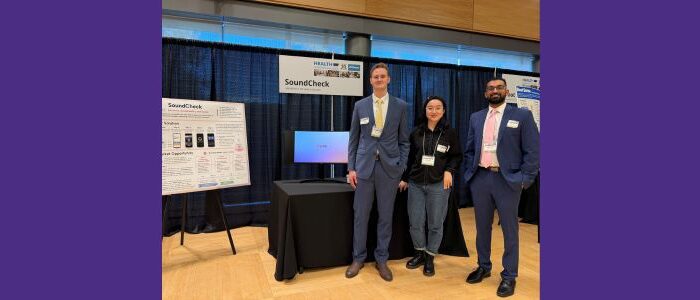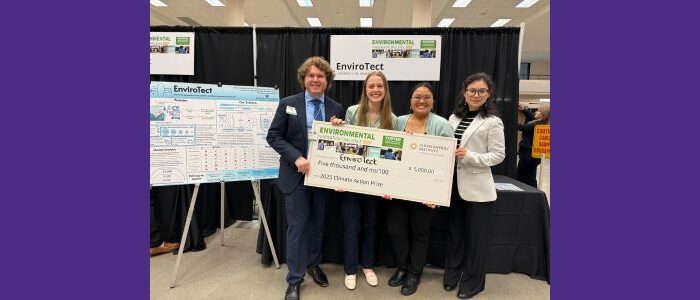Research Associate Professor
ivanp3@uw.edu
Phone: (206) 221-8330
Office: Benjamin Hall Bldg., Rm. 363
Ivan M. Pelivanov
General:
Photoacoustics
Laser-ultrasonics
Biomedical ultrasound
Elastography
Specific:
Non-contact photoacoustic imaging and spectroscopy, spectrophotometry and cytometry
Interleaved PA/US imaging
Optical coherence elastography
Photoacoustic (PA) phenomenon – non-contact generation of ultrasound (or photoacoustic, PA) pulses due to the absorption of a laser pulse by a light absorbing medium and its transient thermal expansion. Thus, any optically absorbing medium can be considered as a source of PA signals. Because PA signal amplitude is proportional to the light absorption coefficient, this method can be used for functional diagnostics and imaging and will, hopefully, be one of the non-invasive imaging modalities in clinical practice.
Laser-ultrasonics (LU) combines non-contact laser excitation of probe US signals in the medium under study with their non-contact optical detection.
Currently, one of the most promising areas of my research interests is the design, development and application of LU, PA and air-coupled US methods for fully non-contact diagnostics, characterization and imaging of a broad spectrum of biological substances (from single cells to living organs, such as the human eye).
My recent future projects will be related with the development of new methods for laboratory medicine, more specifically, – non-contact PA spectrophotometry, digital pathology and cytometry.
Ph.D., Laser Physics, M.V. Lomonosov Moscow State University, Physics Faculty, Moscow, Russia, 2000
M.S., Physics, M.V. Lomonosov Moscow State University, Physics Faculty, Moscow, Russia, 1998
Research Scientist, M.V. Lomonosov Moscow State University, Physics Faculty, Moscow, Russia, 2000-2002
Fellow for junior scientists awarded by Rector of Moscow State University for productive scientific research, 2008 and 2009
Russian President Grant MK 1926.2003.02, “Laser optoacoustic tomography of heterogeneous media”, 2003
Moscow Mayor Fellow awarded from Moscow State University for excellent study and productive scientific research, 1996 – 1998
L. Ambrozinski, S. Song, S. J. Yoon, * Pelivanov, D. Li, L. Gao, T. T. Shen, R. K. Wang and M. O’Donnell, “Acoustic micro-tapping for non-contact 4D imaging of tissue elasticity”, Scientific Reports, 6, Article number: 38967, (2016).
-W. Wei, T.-M. Nguyen, J. Xia, M B. Arnal, I. Pelivanov, M. O’Donnell, “Real-time integrated photoacoustic and ultrasound (PAUS) imaging system to guide interventional procedures: ex vivo study.” IEEE Tran. Ultrason. Ferroelect. Freq. Contr. 62(2), p. 319-328 (2015).
* Pelivanov, T. Buma, J. Xia, C.-W. Wei, and M. O’Donnell, “A new fiber-optic non-contact compact laser-ultrasound scanner for fast NDT&E of aircraft composites.” J. Appl. Phys., 115(11), p. 113105-1-11 (2014).
A. Filimonova, D. S. Volkov, M. A. Proskurnin, I. Pelivanov, “Optoacoustic spectroscopy for real-time monitoring of strongly light-absorbing solutions in applications to analytical chemistry.” Photoacoustics 1(3-4), p. 54-61 (2015)
M. Nikitin, T.D. Khokhlova, * I.M. Pelivanov, “Temperature dependence of the optoacoustic transformation efficiency in ex vivo tissues for application in monitoring thermal therapies.” Journal of Biomed. Opt., 17(6), p.061214 (2012).
* M. Pelivanov, M.I. Barskaya, T.D. Khokhlova, N.B. Podymova, A.A. Karabutov, “Opto-acoustic measurement of the local light absorption coefficient in turbid media: 2. On the possibility of light absorption coefficient measurement in a turbid medium from the amplitude of the opto-acoustic signal.” Quantum Electronics, 39(9), p.835-838 (2009).
* M. Pelivanov, D.S. Kopylova, N.B. Podymova, A.A. Karabutov, “Optoacoustic method for determination of submicron metal coating properties: theoretical consideration.” J. Appl. Phys., 106, p.013507 (2009).
* M. Pelivanov, S.A. Belov, V.S. Solomatin, T.D. Khokhlova, A.A. Karabutov, “Direct measurement of the spatial distribution of laser radiation intensity in biological tissues in-vitro by the laser optoacoustic method.” Quantum Electronics, 36(12), p. 1089-1096 (2007).
S. Grashin, A.A. Karabutov, A.A. Oraevsky, * I.M. Pelivanov, N.B. Podymova, E.V. Savateeva, V.S. Solomatin, “Distribution of the laser radiation intensity in turbid media: Monte-Carlo simulations, theoretical analysis and the results of opto measurements.” Quantum Electronics, 32(10), p.868-874 (2002).
N Inkov, A.A. Karabutov, * I.M. Pelivanov, “A theoretical Model of the linear thermo-optical response of an absorbing particle immersed in a liquid.” Laser Phisics, 11(12), p.1283-1291, (2001).
* Corresponding author
In the News
2025 UW Bioengineering Graduation Celebration June 12, 2025
2025-06-13T06:03:38-07:00May 15th, 2025|
Two Bioengineering PhD Students Compete at the UW Three Minute Thesis Competition
2025-05-12T10:31:33-07:00May 12th, 2025|
Building innovation through mentorship
2025-04-14T10:13:09-07:00April 9th, 2025|
Bioengineering MAB team wins Climate Action Prize at Environmental Innovation Challenge
2025-04-08T07:08:02-07:00April 8th, 2025|
UW Bioengineering Alumnus Kamal Shah leads smartwatch study to detect cardiac arrest
2025-04-03T10:29:38-07:00April 3rd, 2025|
Imaging pioneer Ruikang Wang to deliver Inaugural Fujimoto Lecture
2025-03-31T11:31:26-07:00March 31st, 2025|









